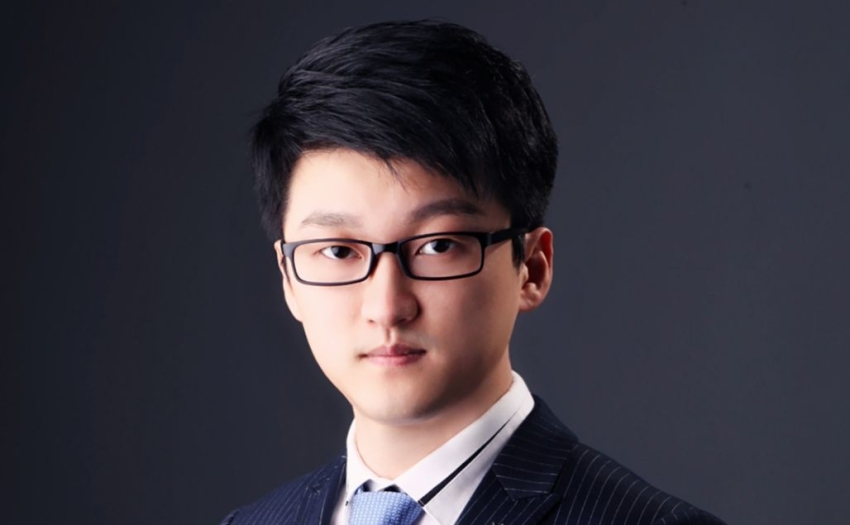News

INTERVIEW with 2022 G. COLONNETTI MEDALLIST, Prof. QING-FENG LIU
Prof. Qing-feng Liu is Associate Professor in Civil Engineering at the Shanghai Jiao Tong University (China), where he leads the “Sustainability and Durability of concrete Materials and Structures” group and serves as Deputy Director of the “Key Laboratory for Digital Maintenance of Buildings and Infrastructure”. Prof. Liu is one of the two 2022 Gustavo Colonnetti medallists. He has been a RILEM member since the beginning of 2015, and contributed in several ongoing/past RILEM TCs: MCT Multi-component transport and chemical equilibrium in cement based materials, 270-CIM Benchmarking Chloride Ingress Models on Real-life Case Studies: Theory and Practice, 258-AAA Avoiding alkali aggregate reactions in concrete - Performance based concept, 281-CCC Carbonation of concrete with supplementary cementitious materials, 283-CAM Chloride transport in alkali-activated materials, 285-TMS: Test method for concrete durability under combined role of sulphate and chloride ions, ASR Risk assessment of concrete mixture designs with alkali-silica reactive (ASR) aggregates, DOC Degradation of organic coating materials and its relation to concrete durability and FTC Durability and Service Life of Concrete under the Influence of Freeze-Thaw Cycles combined with Chloride Penetration. His presentation titled “Mechanism studies on concrete durability: ionic transport, electromechanical rehabilitation and service life prediction”, presented on Thursday 17 March 2022 during the 75th RILEM Anniversary webinar, can be found here.
25 March 2022
RILEM Implementation Manager (RIM): While reading your CV attached to your Colonnetti medal application, I read that you attended the RILEM Spring Convention in 2019 in Croatia. I was there too! It was my first RILEM event as RIM!
Prof. Qing-feng Liu (Qing-feng): I remember that event! I actually attended almost every RILEM Annual Week and Spring Convention since I moved back to China. I remember you and Judith (Editor’s note: Mrs Judith Hardy, RILEM General Secretary) being introduced to all during the RILEM Dinner. It was held in a hall in Pula, outside the convention venue, Rovinj.
RIM: Nice! I have to go a step back in time, now. You said that after your return to China in 2014, you attended nearly all RILEM Annual Weeks and Spring Conventions. In my database, you joined RILEM in 2015. Is it the real date, or you had been “unofficially” involved in RILEM before that year? What was your first connection with RILEM?
Qing-feng: I can talk about this all day! In reality, there have been many “contacts” between me and RILEM in the early days of my career. The first one was just after I started my PhD in Birmingham, in 2010. My PhD topic was on “multiphase modelling of multi-species transport in concrete”. I was very happy to find such a highly relevant RILEM Technical Committee, that was MCT Multi-component transport and chemical equilibrium in cement based materials, just established in 2009. I recognised so many familiar names amongst the TC members, the work of whom I read about in the literature. Maybe in retrospect, that TC was not so active as the ones nowadays, but I learned a lot from that TC as a PhD student.
RIM: Did you join that TC?
Qing-feng: Actually, I didn’t officially join at first as I was not a RILEM member at that time. I didn’t know I could join as PhD student. But I saw the list of people and I connected to them all, like for instance, Prof. Luping Tang and Prof. Carmen Andrade. In the meantime, I also interacted with the TC work and conducted two very relevant modelling work published in top journals of the area. After I finished my PhD in 2014, I became an official RILEM member and since then… well, you know the story!
RIM: Yes, I do! You have been so active! You have joined 9 TCs and now you are a TAC expert. When you were a PhD student, was your supervisor to expose you to RILEM?
Qing-feng: It’s a pity that my supervisor was more active in the organizations hosted in the UK than those in mainland Europe. I found RILEM on my own! I was looking for some paper in the literature related to my research area and I found RILEM and its Technical TCs. If I had known I could have joined as a PhD student, I would have done it earlier. I now encourage my PhD students to join RILEM as young members.
RIM: This anecdote says a lot about you. For the little that I know you, I see you as an explosion of activates and ideas. You have a target and you go there without missing it. I have interviewed many people, but this is the first time someone tells me “I joined RILEM by myself”. There is usually a colleague or a supervisor that introduces RILEM to the PhD student. Not in your case. You had research to carry out, you found the good source of knowledge and you joined that source! And then in 2022 you became RILEM Colonnetti Medalist! How did that happen?
Qing-feng: It was the first time I applied, and probably my last chance as well since I had turned 35 in November last year (Editor’s note: the medal candidates are eligible if younger than 35, but Prof. Liu’s special circumstances were accepted by the jury). It is such a big honour for me to receive this award. I still remember when the news first came to me: it was during the Chinese New Year Celebration, in February 2022. I thought “Wow! What a New Year gift!”. To be honest, I was not expecting to get this award but it feels so good to be recognised by senior experts of RILEM. Before COVID, I used to travel every year to Europe. I have met many past medallists and I also attended many of the award lectures. Such good work and great presentations. For a long time I thought “the RILEM medal is too far away from me”. I have also noticed that the Colonnetti medals seldom go to non-Western countries, as many medallists work in Europe or North-American countries. I actually never thought to apply for it. I know this was more my mind-set than a real obstacle. It sounds hilarious, doesn’t it? But this time, since it was my last chance, I told myself “why not? No regret, nothing to lose”.
RIM: And you got it!
Qing-feng: Yes, I was very lucky.
RIM: Tell me more about your experience in RILEM. Has RILEM helped your career?
Qing-feng: Absolutely! As I told you, the first RILEM TC for me was MCT that I officially joined straight after finishing my PhD and returning to China. After that, although you know I have been involved in a number of more recent TCs, I focused on one TC in particular: 270-CIM Benchmarking Chloride Ingress Models on Real-life Case Studies: Theory and Practice. This TC is very important to my research as Chloride Ingress Modelling is what I have been doing throughout my career. Finding out if these models are suitable in benchmarking real-life cases by working in this TC means a lot to me. I highly appreciated the TC aims. I have developed numerical prediction models and attended in person all 7 on-site TC meetings, from Copenhagen (Denmark) in 2016 to Ghent (Belgium) and Darmstadt (Germany) in 2017, Copenhagen again and Delft (the Netherlands) in 2018, Rovinj (Croatia) and Nanjing (China) in 2019. I was ready to join the meeting in Guimaraes (Portugal) in 2020 but COVID stopped me.
RIM: It stopped everyone.
Qing-feng: Yes! I think it is not always so easy for people from eastern Asia to travel to Europe, especially for young researchers, as international travels need time and funds. But it was worth doing it. Those meetings gave me lots of insights and confidence in our modelling work. After 2019 when this TC was almost finished, I was invited by other RILEM members who knows my work to join other relevant TCs.
RIM: Do you know that the State-of-the-Art Report (STAR) of TC 270-CIM is coming up very soon? (Editor’s note: this was the state at the time the interview was recorded, in late March. “Benchmarking Chloride Ingress Models on Real-life Case Studies - Marine submerged and Road Sprayed concrete structures – State of the art report of the RILEM Technical Committee 270-CIM”, edited by Eddie Koenders, Kei-ichi Imamoto and Anthony Soive is now available online).
Qing-feng: Great! I carried out the chloride ingress predictions by using our Double-Multi-model for that publication, and I know my comments were well-included in each chapter.
RIM: If you had to explain your work to someone without any engineering background, how would you do it?
Qing-feng: In short, I would say I try to make models to better predict the service life of concrete or to understand the behaviour of concrete serving in some very aggressive environments. When working in TC 270-CIM, I learnt that most of the times, people from the industry prefer empirical models, based on “simple” formulations. But in reality. the problem to predict is quite complex and some empirical models are not very reliable. To obtain a more rational solution, you have to consider more factors, the solving equation becomes highly non-linear and you have to use numerical models to solve it. Another thing that I enjoyed from working in TC 270-CIM was the presence of industry members. Based on their on-site experience, they gave us some feedback to tune our models to their needs.
RIM: What has been the impact of your model so far? Is it easy to be shared or followed?
Qing-feng: I always wish my models could be used as much as possible. In every published work from my group, we almost list everything, including every factor, every equation, every boundary condition. This turns our papers much longer than average papers but at the same time it allows other people to repeat the calculation. This is a part of what I try to do for the scientific community. And I guess this also explains why our papers are highly cited: maybe because other researchers find them helpful.
RIM: I have one last question that is more my curiosity: I noticed that you do not have many papers published on Materials and Structures. Is this due to the fact that your research area is outside the aims of this journal? If the answer is confidential, I will not write it down…
Qing-feng: Don’t worry Daniela, I can answer this! I am quite an active reviewer for this journal, but there is a rule limiting the number of images and tables of the papers published there to 15. In our papers, we usually create more than 20 figures and tables, so that explains why. It is a simple reason. But the good news is that some ongoing work from my group does not require so many images and we are planning to submit something to Materials and Structures soon. With no doubt I have high regard for this journal, the flagship journal of RILEM association. By the way, I also have great feeling and gratitude for RILEM, for not only helping me from the scientific aspect, but also for helping me to keep a close communication with friends and colleagues in Europe. So, from my experience, I could summarize RILEM also as a kind of power to bring people together, to keep people staying together, and to … unite the world! I believe that’s the role that a scientific association needs to have, which is highly appreciated. And for me, a member of RILEM, I think I have been doing and will do my best to use my voice, a Chinese voice, to create more common interests, and something I feel like is for the greater good, I guess.
RIM: It’s fantastic! I hope I can write down these comments! Thank you so much for this wonderful interview, Qing-feng!
Qing-feng: Thank you, Daniela! It’s very nice talking with you. Have a nice day!














No comment
Log in to post comment. Log in.